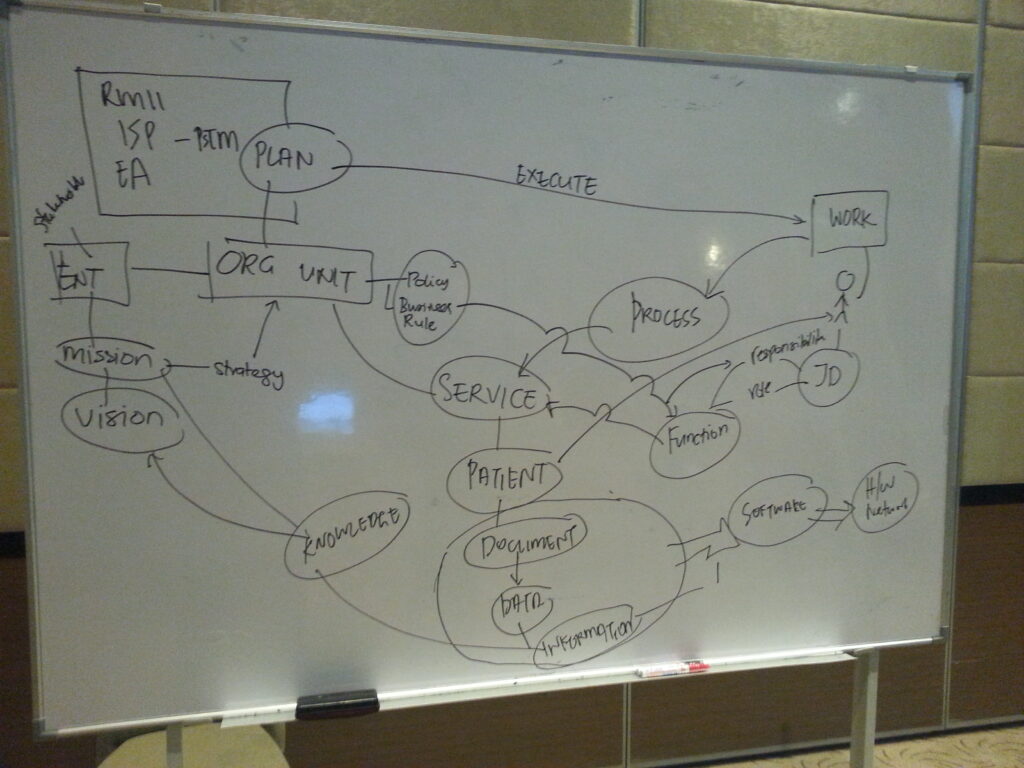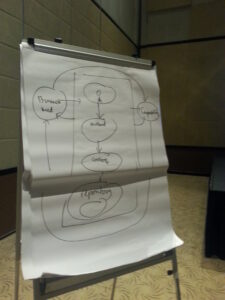In the digital epoch achieving business and IT alignment remains among the topmost concerns of IT executives. In order to address this gap, Enterprise Architecture (EA) practices at a more detailed level and identifies the benefits and blockers associated with specific EA related activities and EA artefacts. Though EA practices are closely associated with EA artefacts, not all activities mentioned by the interviewed architects can be related directly to any specific EA artefacts [1, 2].
EA practice, as an organisational activity that implies using EA artefacts, may include a variety of diverse actions permeating the whole organisation from top-level corporate strategic management to mid-level IT portfolio management to separate system development processes on the ground
Various EA artefacts used in organisations can be very diverse in nature and range from executive-level architecture principles and core diagrams to rather detailed and technical project-start architectures [3, 4]. These EA artefacts have different usage scenarios in organisations ranging from guiding IT investments to ensuring compliance of separate IT projects with an organisation-wide architecture.
Hence, the message that what the EA researchers and practitioners across the world want to highlight here is DO NOT GET TOO overwhelmed WITH STANDARDISATION BY ONLY ONE SINGLE ARTEFACT MODELLING STYLE OR NOTATION. It is nothing wrong to combine various artefacts if it can represent the essential EA layers, aka Business-Data-Application-Technology (BDAT) layers better. In fact, the organisation can opt to resolve just with a simple mind map or even MS Excel/MS Word if it can represent the BDAT layers well. EA is about the alignment between (B) Business and (T) Technology to support the (S) Strategic direction of the organisation.
Again, what so great if you can draw the standard EA diagram notation but unable to portray the alignment of S+B+T?
All the enterprise architects around the world
I leave the answer to you….
Figure 1: Final EA Model
The final EA model will look like this (Figure 1), after so many iterations of brainstorming and data collection.
Figure 2: Example of organisation 1st EA brainstorming mind-map (Credit to Dr Ariffin Marzuki Mokhtar, Senior Consultant Anaesthesiologist HUSM and also Certified Enterprise Architect, sharing during one of the EA Workshops)
The main aim of having the mind map (or anything similar) is to identify the organisation vision, mission, core businesses and interdependency with each other internal and external party. We can recognise the core S+B+T elements already at this stage. Who can produce such a diagram? The business owner at that particular organisation. Not the EA consultant or any outsiders.
Figure 3: The EA process, actors and BDAT layers (during one of the EA brainstorming workshop I attend previously)
Again, for every single business process and those BDAT layers, a brainstorming session with the business owner using ‘chalk & board’ is the best. Do not rush jump into standard notation or fixed drawing yet. Just throw the idea as it is. Figure 3, explain all, we just draw whatever we feel right and others can understand it as well. Hence it is advisable that only after you get the validation from the business owners, we as the enterprise architect can create the artefacts using the standard notation tools.
REFERENCES
- Kotusev, S. (2019). Enterprise architecture and enterprise architecture artifacts: Questioning the old concept in light of new findings. Journal of Information technology, 34(2), 102-128.
- Niemi, E., & Pekkola, S. (2017). Using enterprise architecture artefacts in an organisation. Enterprise information systems, 11(3), 313-338.
- Foorthuis, R., Van Steenbergen, M., Brinkkemper, S., & Bruls, W. A. (2016). A theory building study of enterprise architecture practices and benefits. Information Systems Frontiers, 18(3), 541-564.
- Armour, F. J., Emery, C., Houk, J., Kaisler, S. H., & Kirk, J. S. (2010). The integrated enterprise life cycle: Enterprise architecture, investment management, and system development. In Strategic Information Systems: Concepts, Methodologies, Tools, and Applications (pp. 397-412). IGI Global.





Recent Comments